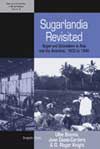Sugarlandia Revisited. Sugar and Colonialism in Asia and the Americas, 1800-1940

Oxford / New York: Berghahn Books, 2007. ISBN 978-1-84545-316-9, 240 pp.
Sugar was the single most valuable bulk commodity traded internationally before oil became the world’s prime resource. From the sixteenth to the eighteenth century, cane sugar production was pre-eminent in the Atlantic Islands, the Caribbean, and Brazil. Subsequently, cane sugar industries in the Americas were transformed by a fusion of new and old forces of production, as the international sugar economy incorporated production areas in Asia, the Pacific, and Africa. Sugar’s global economic importance and its intimate relationship with colonialism offer an important context for probing the nature of colonial societies.
This book questions some major assumptions about the nexus between sugar production and colonial societies in the Caribbean and Southeast Asia, especially in the second (post-1800) colonial era.
